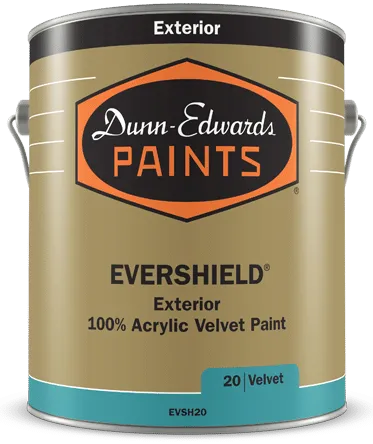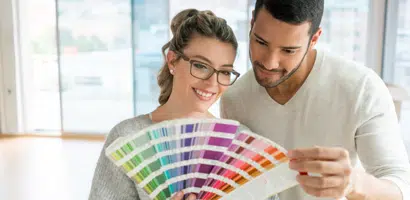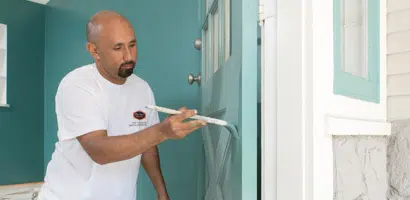Chill Out With These Fall Painting Tips
09/29/2021 | davidcamacho |
Extend your painting season and get the best performance out of your paint
Pumpkin latte season is here. With it comes shorter days, chillier nights, and a slower pace. But colder weather doesn't mean you have to put your business on hold. Here are five tips to help you extend your painting season while making sure to get the best performance out of your paint
Plan ahead, especially for exterior jobs.
Check your local weather report and read paint labels and technical bulletins. Getting intimate with paint specifications might not be the most exciting part of the job, but as they say, "Failing to plan is planning to fail." Make sure that you have the right paint for the conditions in which you're planning to paint. Many cold-weather latex paints will cure at temperatures below 50 degrees Fahrenheit. All Dunn-Edwards latex paints are formulated to cure down to 40 degrees Fahrenheit, with some going as low as 35 degrees Fahrenheit. But be aware that other environmental factors could affect your paint's performance: a lower substrate temperature, high humidity, high dew point, and drastic temperature changes during the curing phase can all wreak havoc. The first 48 hours of drying time are going to be the most critical, with air temperature and substrate temperature needing to meet the minimum recommendations while the paint cures. Again, planning ahead is key.
Go premium.
When selecting paint, consider that ultra-premium products like Dunn-Edwards EVERSHIELD® outperform others in terms of applied hide, alkali burnout resistance, and surfactant leaching resistance. Having fewer coats to apply and fewer problems to solve means that you can finish jobs faster, before the cold weather hits. The same goes for interior products such as Dunn-Edwards ultra-premium, ultra-low VOC SUPREMA®, which offers exceptional hide with superior durability, washability, and block resistance. Going ultra-premium inside means that you'll disrupt occupants less due to the need to apply fewer coats, combined with the fact that ultra-low VOC products tend to have less of an odor.
Chase the sun.
During the summer, you probably followed the shade in an effort to slow exterior drying times and stay out of the heat as much as possible. Now you can use the reverse technique to give your exterior paint job the best chance at maintaining its optimum temperature for curing. Aim to apply exterior paints during the warmest, driest time of day, between 10 am and 2 pm. Start where the sun is shining, and follow it around the property as it moves. When the sun and temperature start dropping, focus on clean up and prep work for the next day's job.
Head inside.
Fall is a time when we all get a little more introspective. We think more about being cozier and focusing on quiet tasks. As your clients move from outdoor spaces to inside ones, they might notice that certain rooms no longer fit their lifestyle. This is a great time to revamp interior spaces, which tend to be warmer and dryer, allowing for an extended painting season. As you're finishing up those warm-weather exterior jobs, consider reaching out to happy clients to see if they have some interior spaces that need repainting.
Shift your focus.
Even on days when it's too cold or wet to paint, you can still keep your business moving forward. Take a moment to review your sales goals, look into email or social media marketing campaigns, and purchase supplies and signage. Before you know it, you'll be back at the job site with little time or energy to pay attention to these important aspects of your business. So take advantage of poor weather conditions when you can.
For more information on cold weather painting and other technical considerations, check out our library of technical bulletins.
















